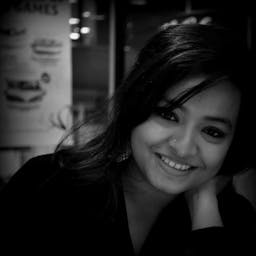Exclusion to Innovation: A BRAC Boat School Story
Jan 21, 2015
Story
In Bangladesh’s low-lying haor areas a silent revolution is taking place. The quiet waters of these massive wetlands that stay submerged for over half a year, every year resonate with the tunes of children’s nursery rhymes drifting from BRAC’s ShikkhaTaris or Boat Schools.
Bangladesh has made amazing progress in its education sector in the last decade- school enrolments increased, gender parity was attained at the primary and secondary levels, retention rates have improved. As we continue to achieve these milestones, there remains a large group in different pockets across the country that continues to be left out of schools. The children from the haor regions across the country are one such community who remain marginalized due to geographical exclusion, cyclic poverty and lack of schools that are tailor-made to specifically meet the challenges faced by these children.
More children needed to be placed in schools, more children to be brought back to school. With water-logging and lack of means of transport making mainstream schools inaccessible for a long time every year, BRAC stepped in with its Boat School (ShikkhaTari) program in 2011with the firm belief that this model could be an innovative approach towards educating children in the most remote areas of the marginalized and excluded haorregions in the country. To date, BRAC Education Program (BEP) has established 357 boat schools across 14 different districts. The number is projected to rise to approximately 600 by the end of this year.
Each ShikkhaTari is a 40-foot long steel boat.One boat, one classroom, one teacher.The idea behind these schools were very simple and yet very innovative and exceptionally beautiful! In the monsoon season, when the low-lying haorareas are inundated/ overrun, boats go around and pick up the children from their hatisand classes commence. The classrooms are bright, airy and are decorated with paintings and writings, handmade flowers, alphabets, word lists and time-tables, all that the students and teachers make together. These floating schools are filled with the happy chatter of little children, laughter and giggles, songs and rhymes, white lies and funny pranks – the ambiance inside is no different from mainstream schools and yet unique to the haor.
The vastness of the haor takes ones breath away. One seems to lose track of how far they have travelled till they see the beacon of light – the pink boats – where education still lives on. In this way, these boat schools are reaching out to the unreached and trying to make a difference in their lives. This model recognizes that every child who is out of school might have dreams that may never be fulfilled or their potential realized. It respects the fact that every child is entitled to education and is set toincrease the access to education for these children- to lay foundations for newer opportunities, innovation, transformation and growth. Visiting these schools leaves one inspired and motivated, the stories of these children reaffirm that the struggle for achieving universal education is one worth fighting for.
For more information on BRAC Boat Schools:
http://www.brac.net/content/brac-build-500-boat-schools-and-2000-slum-sc...




